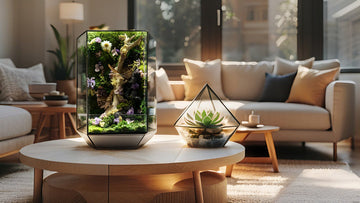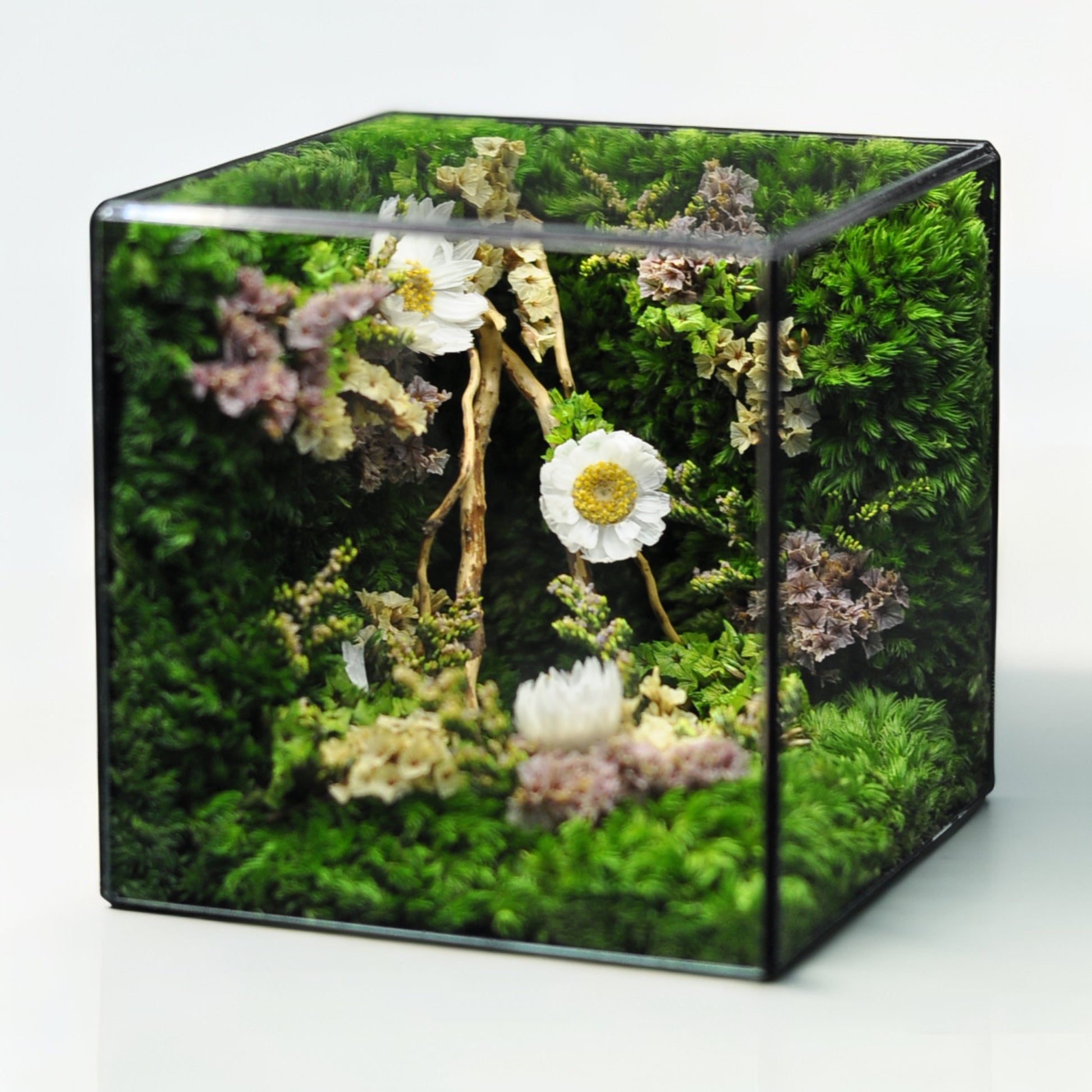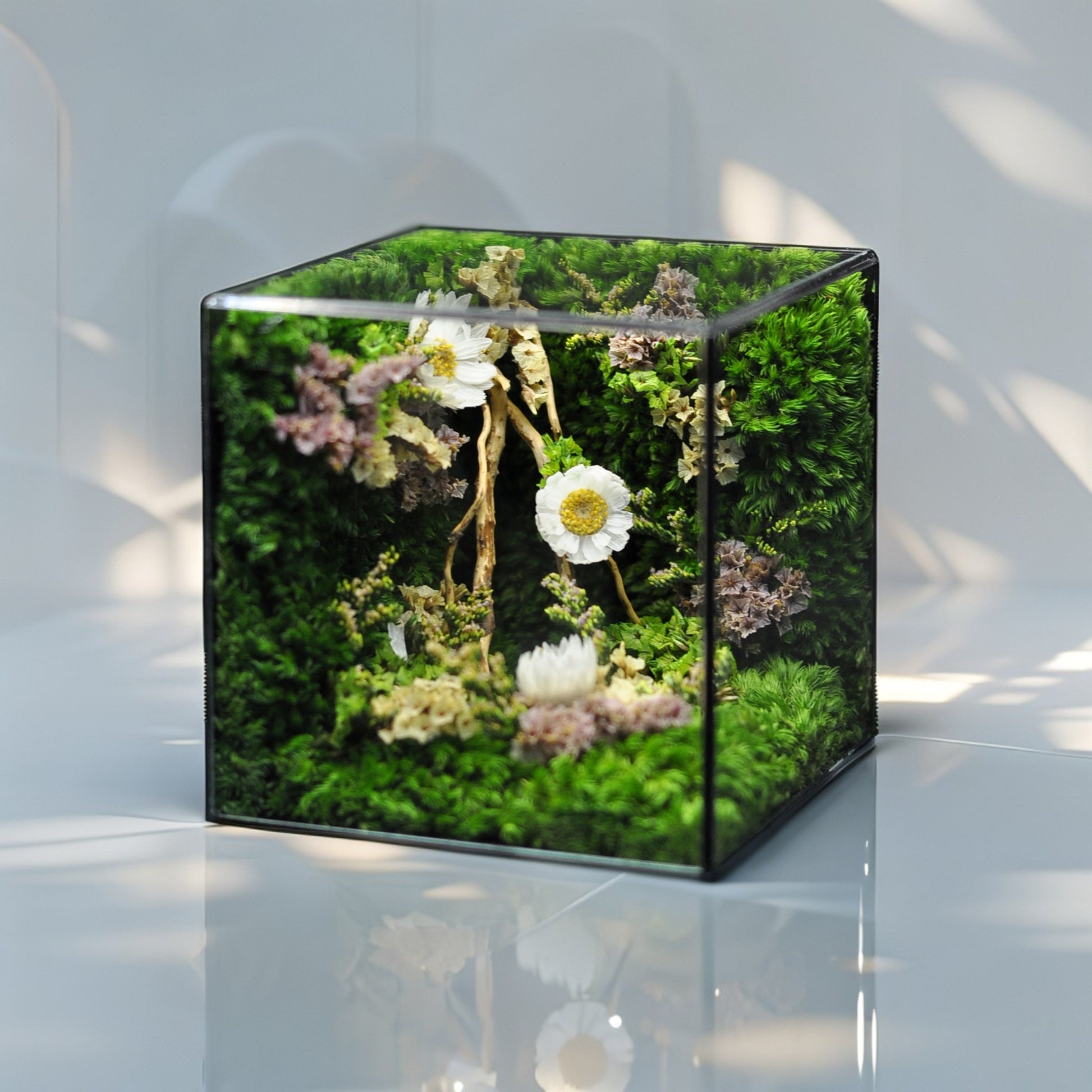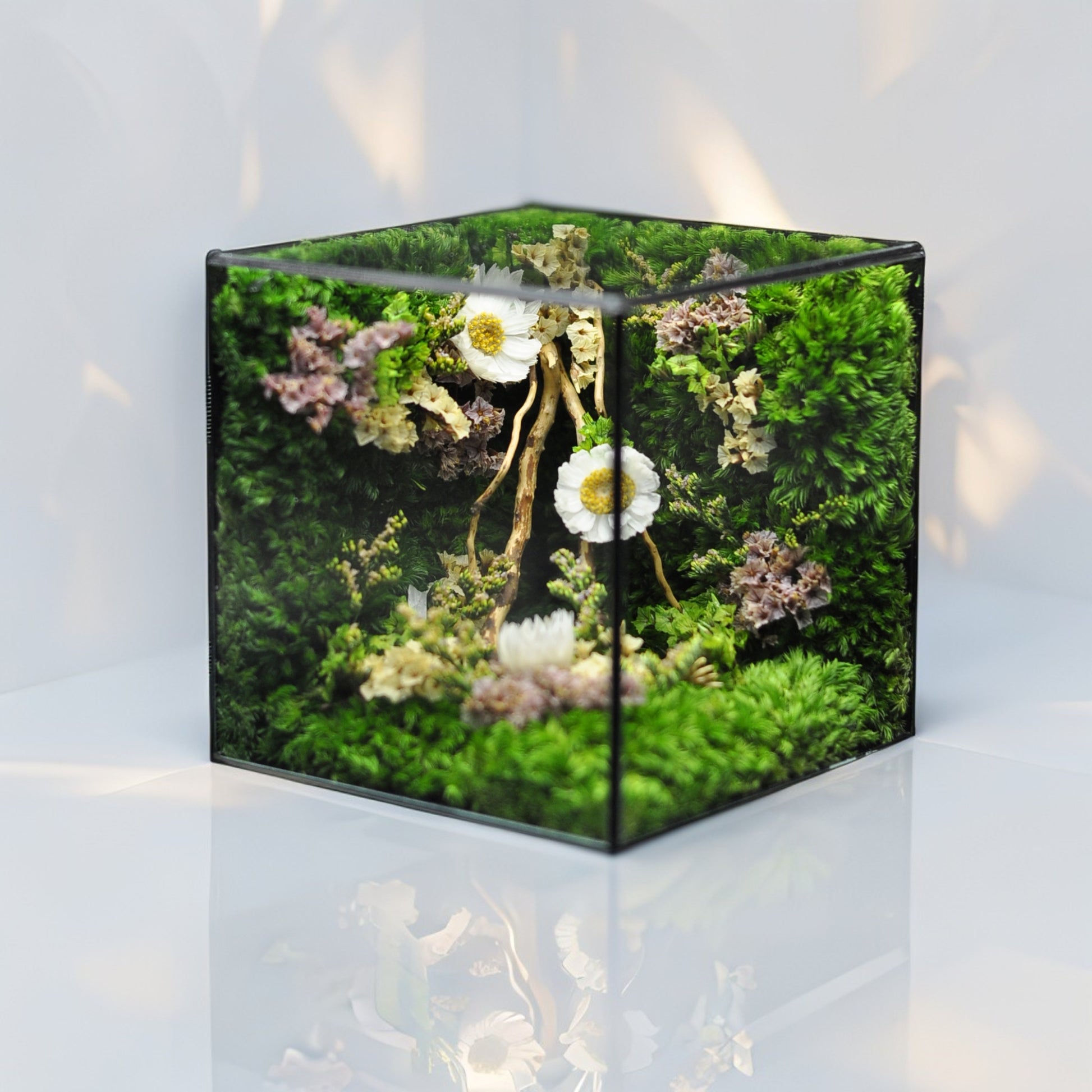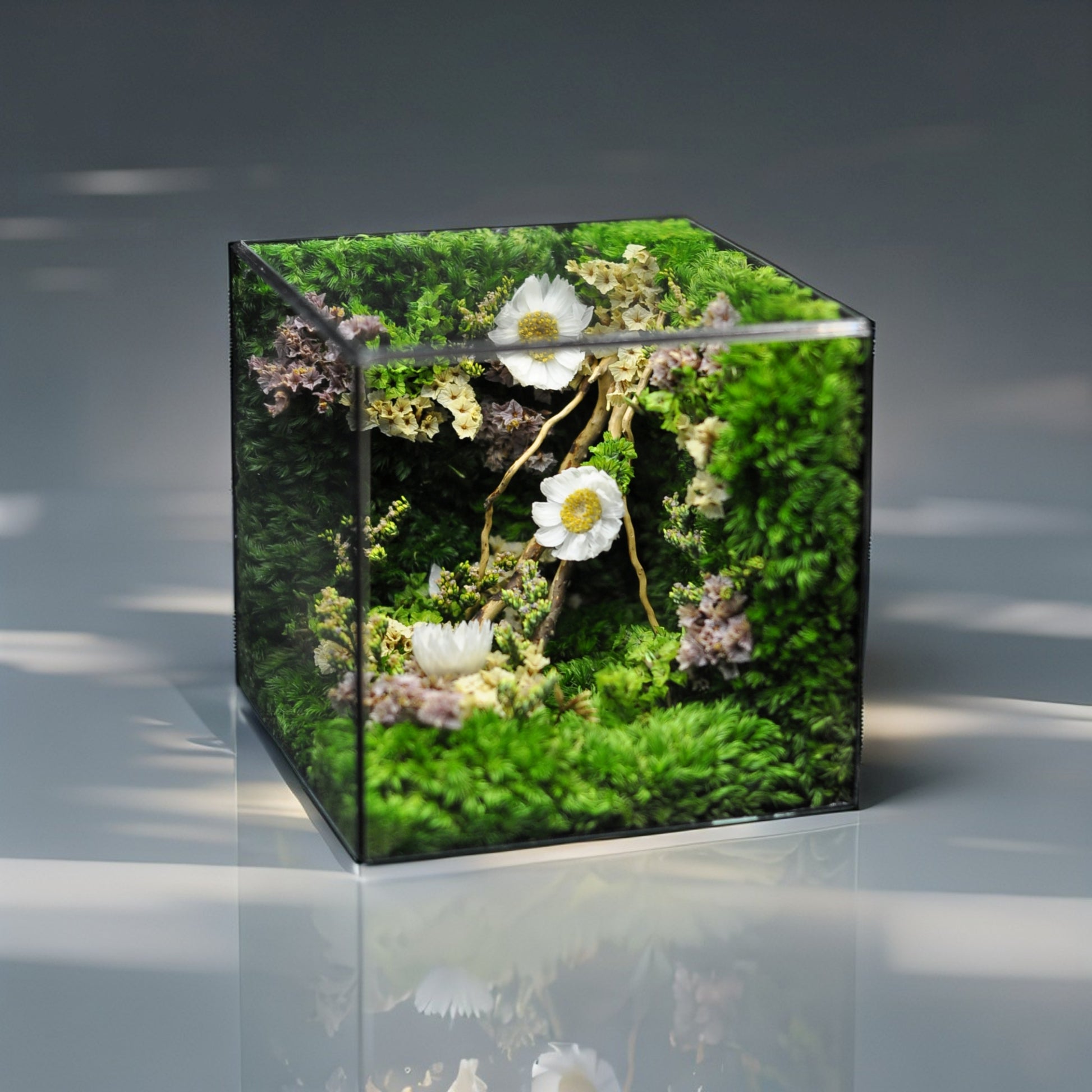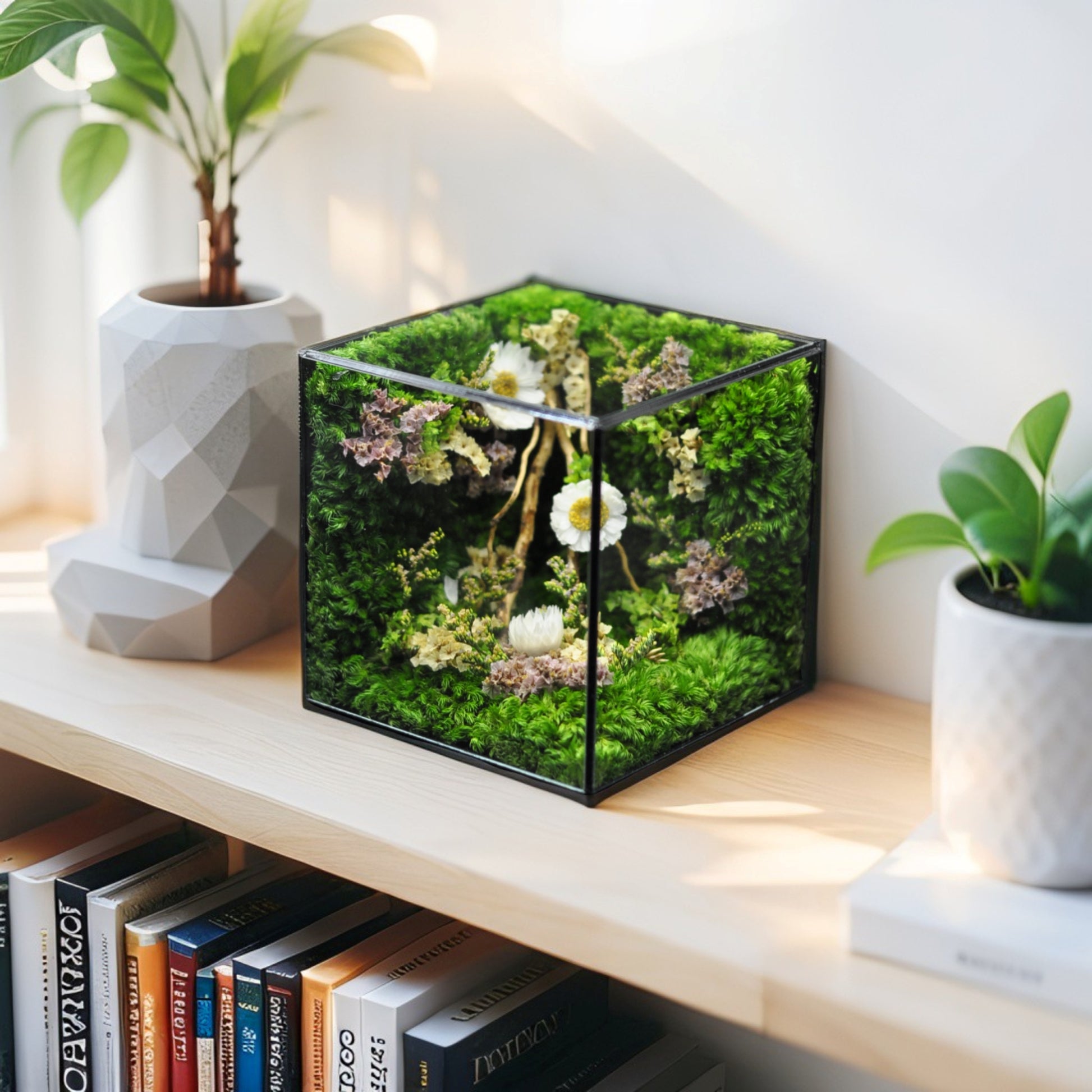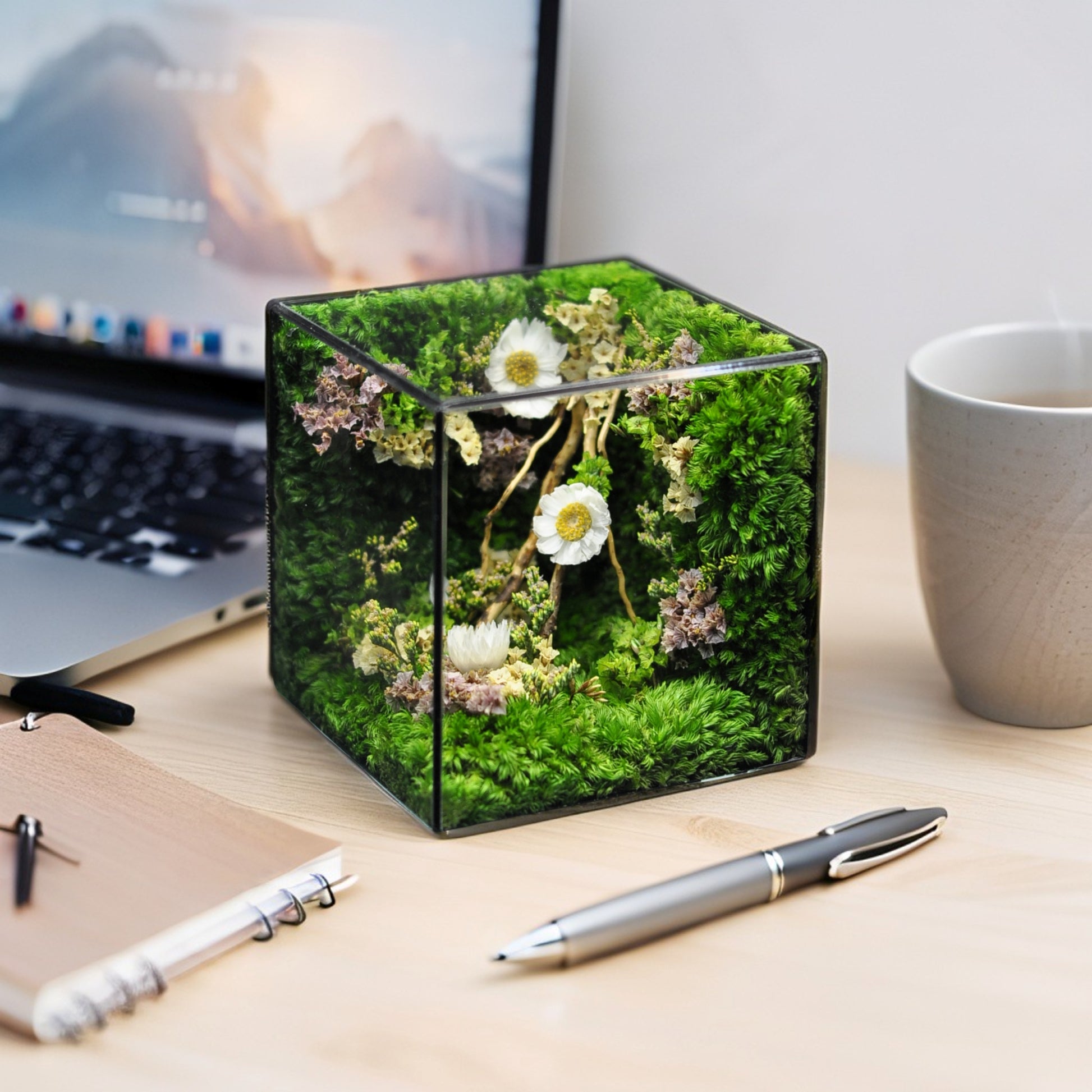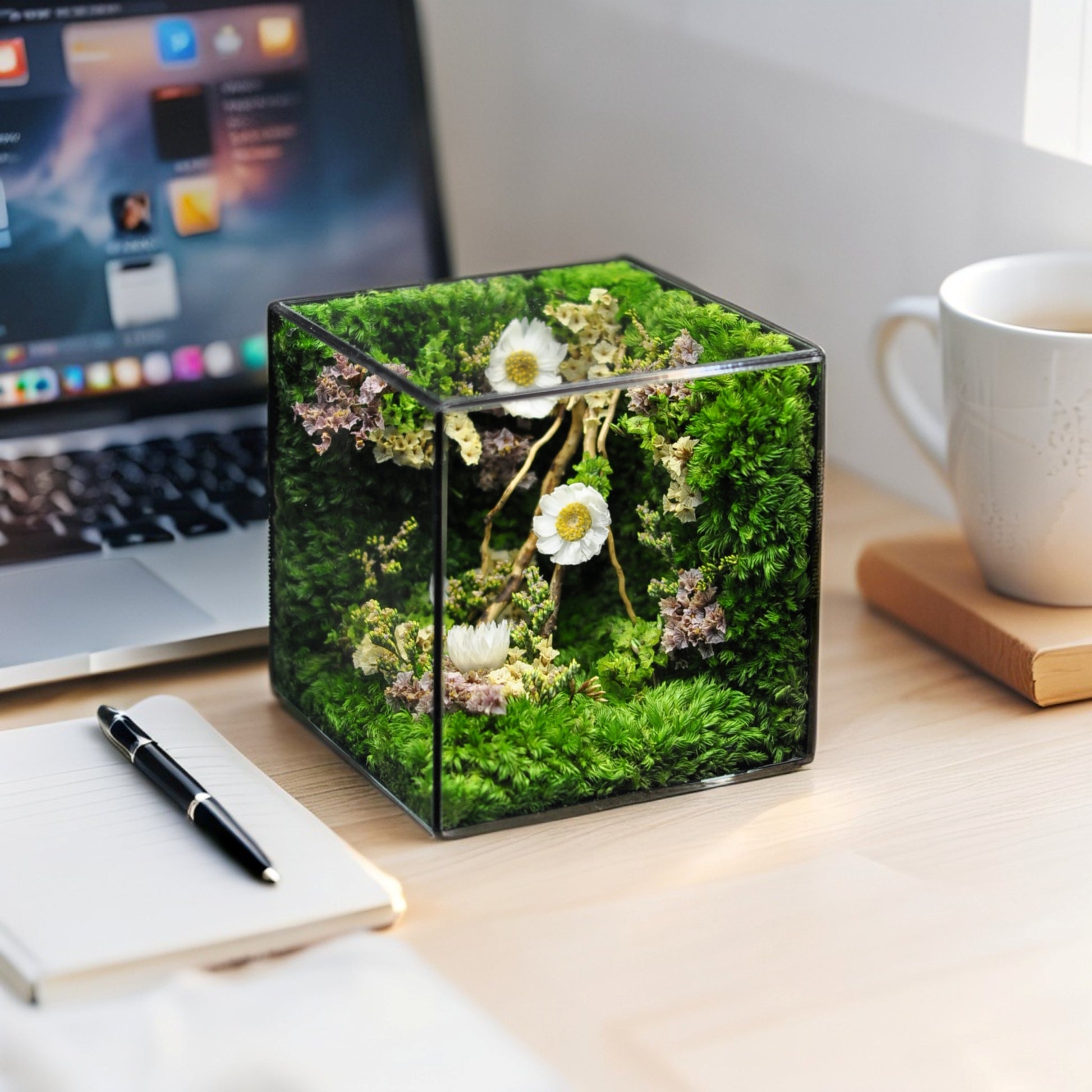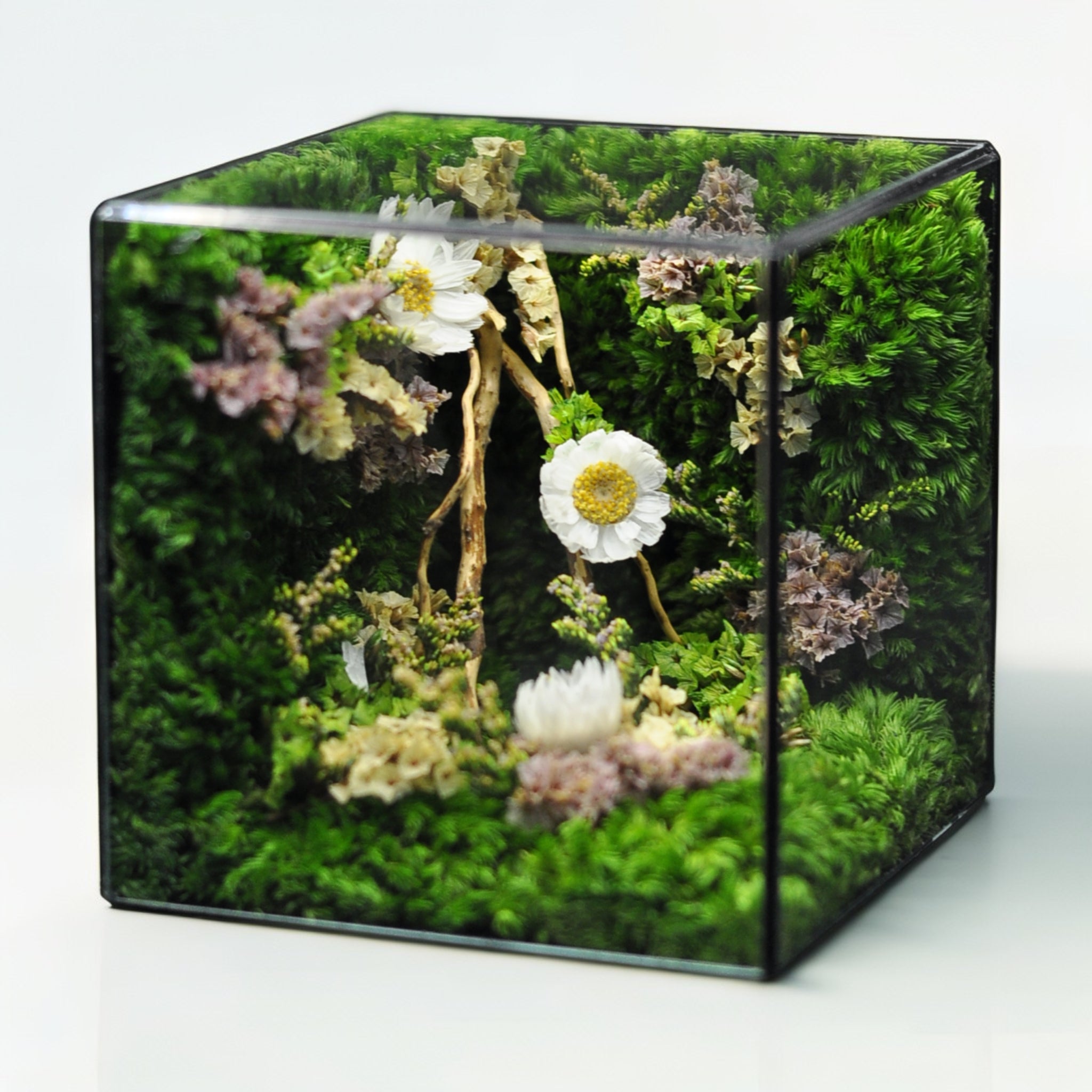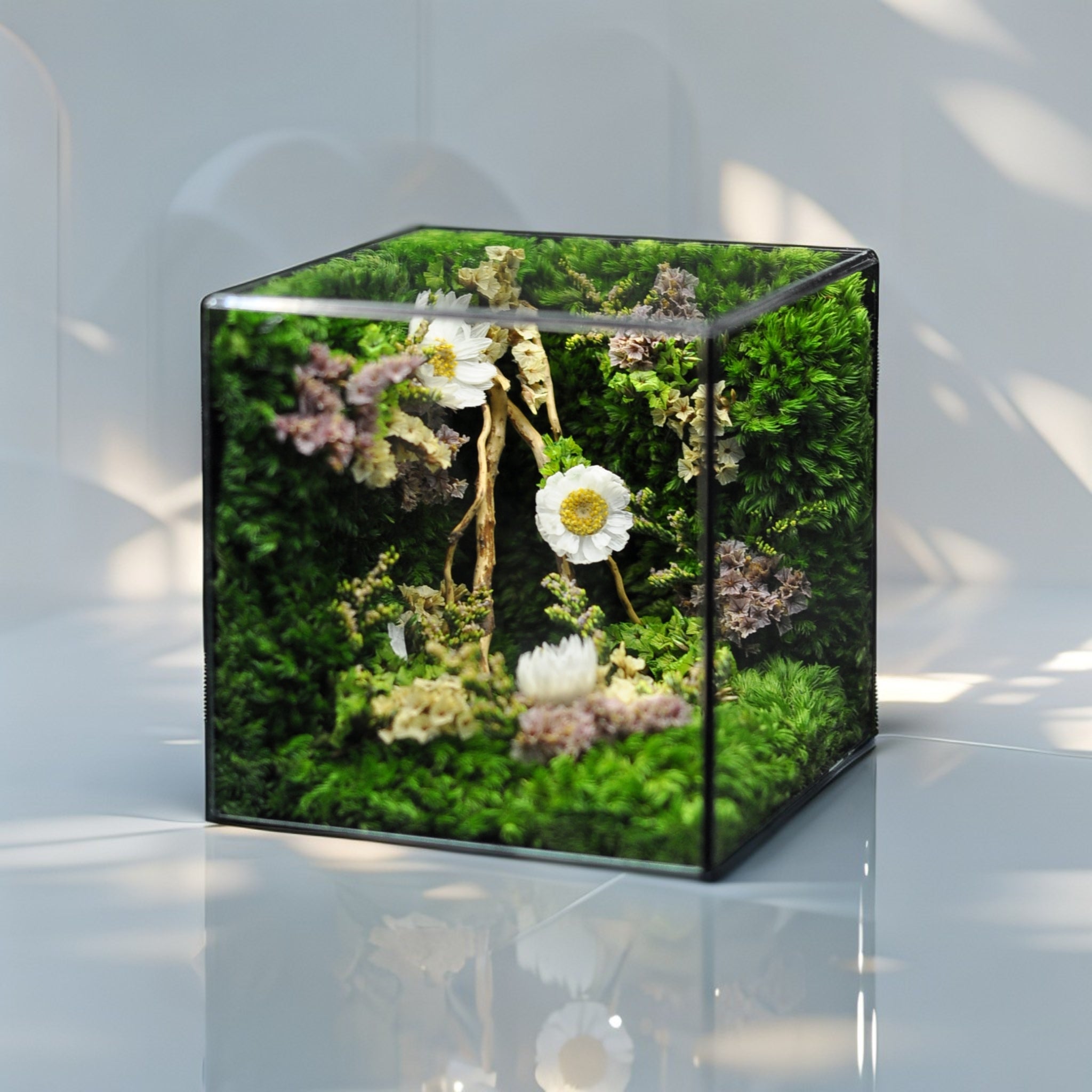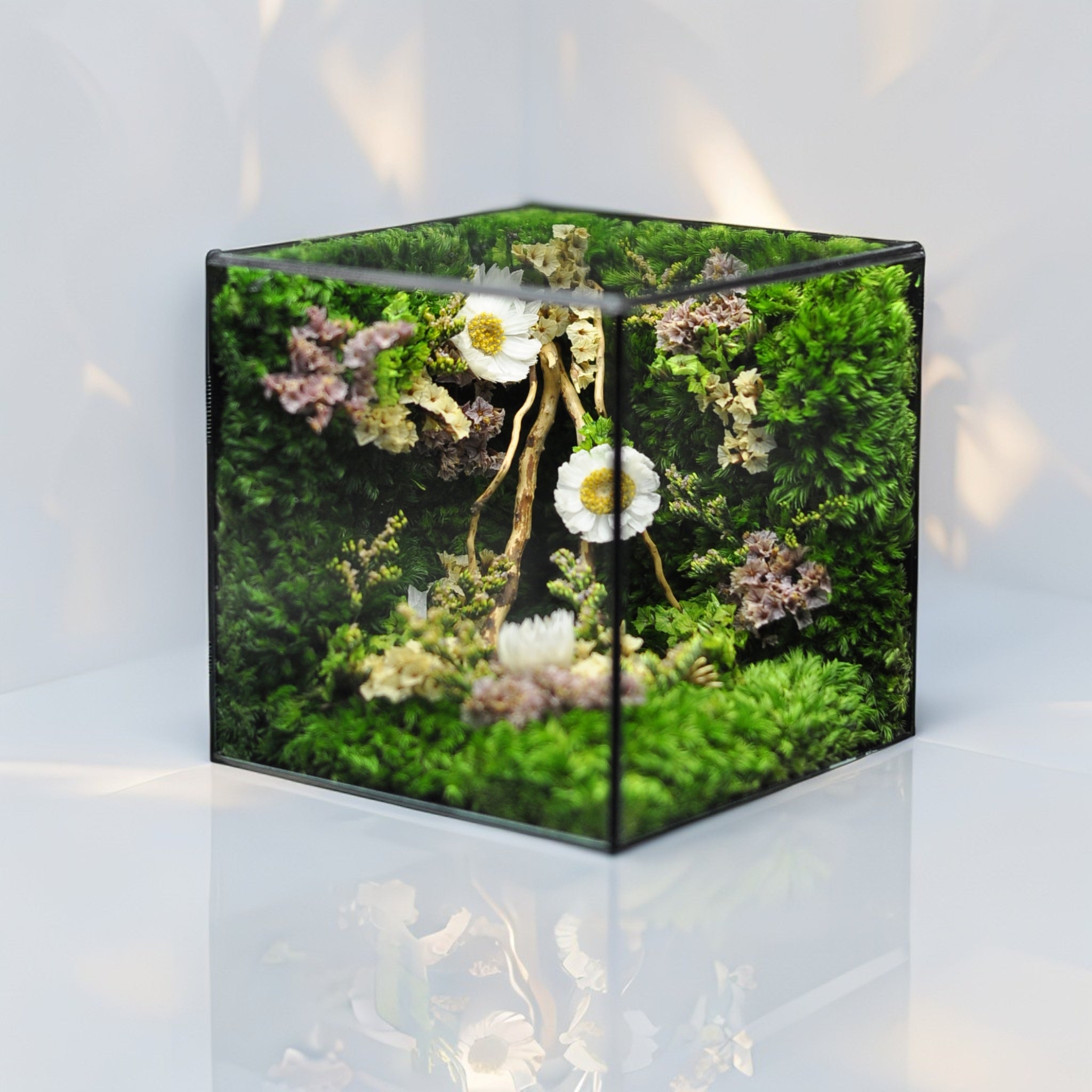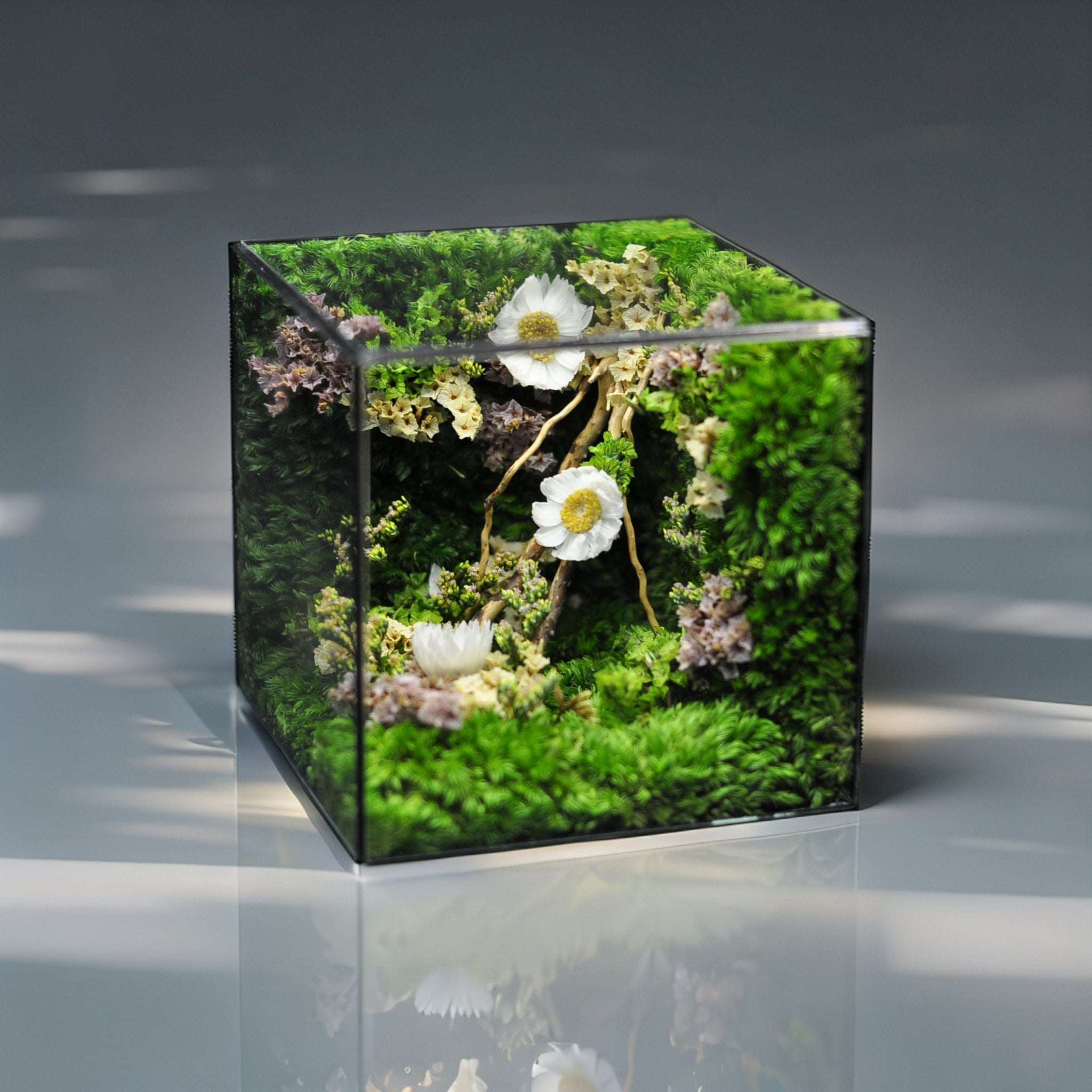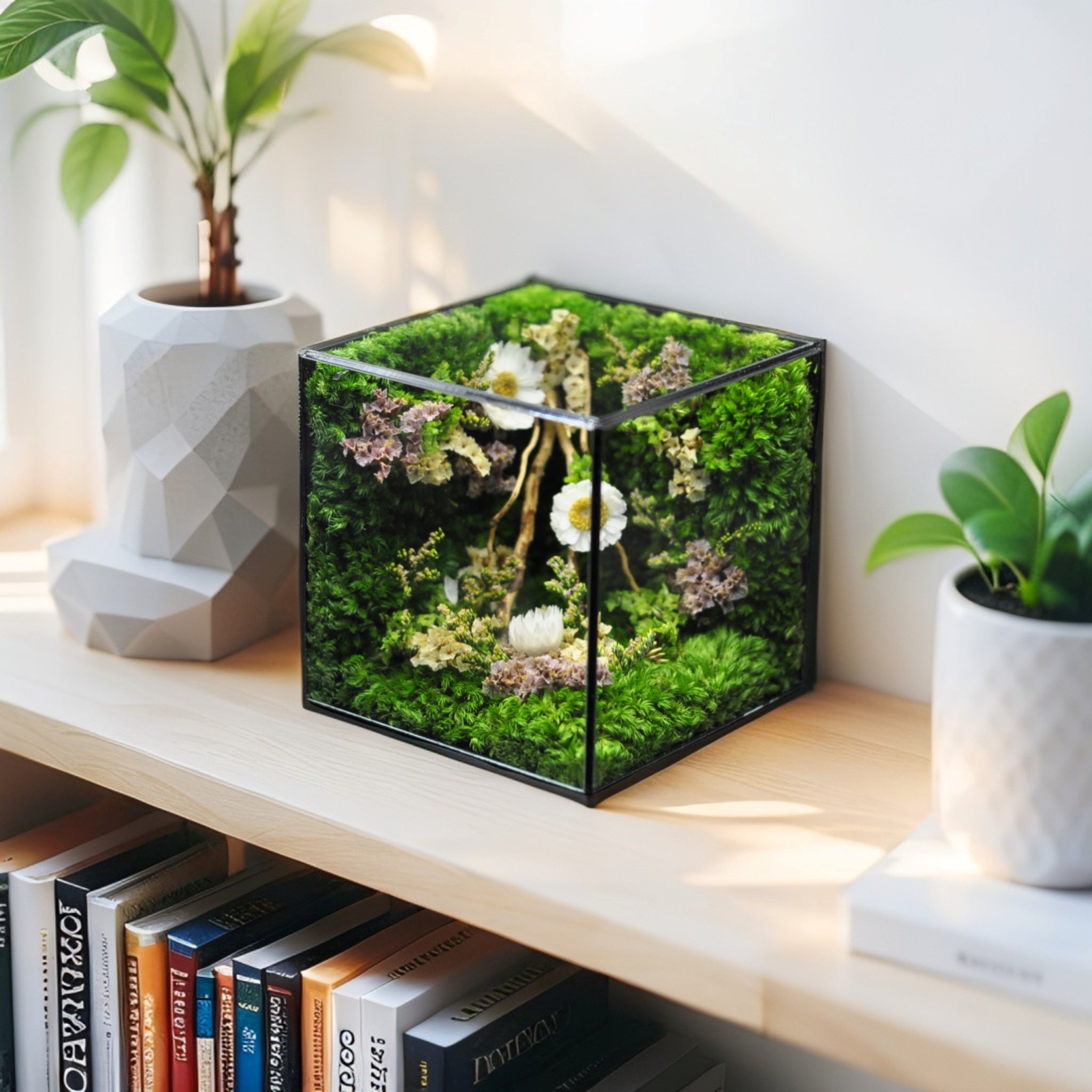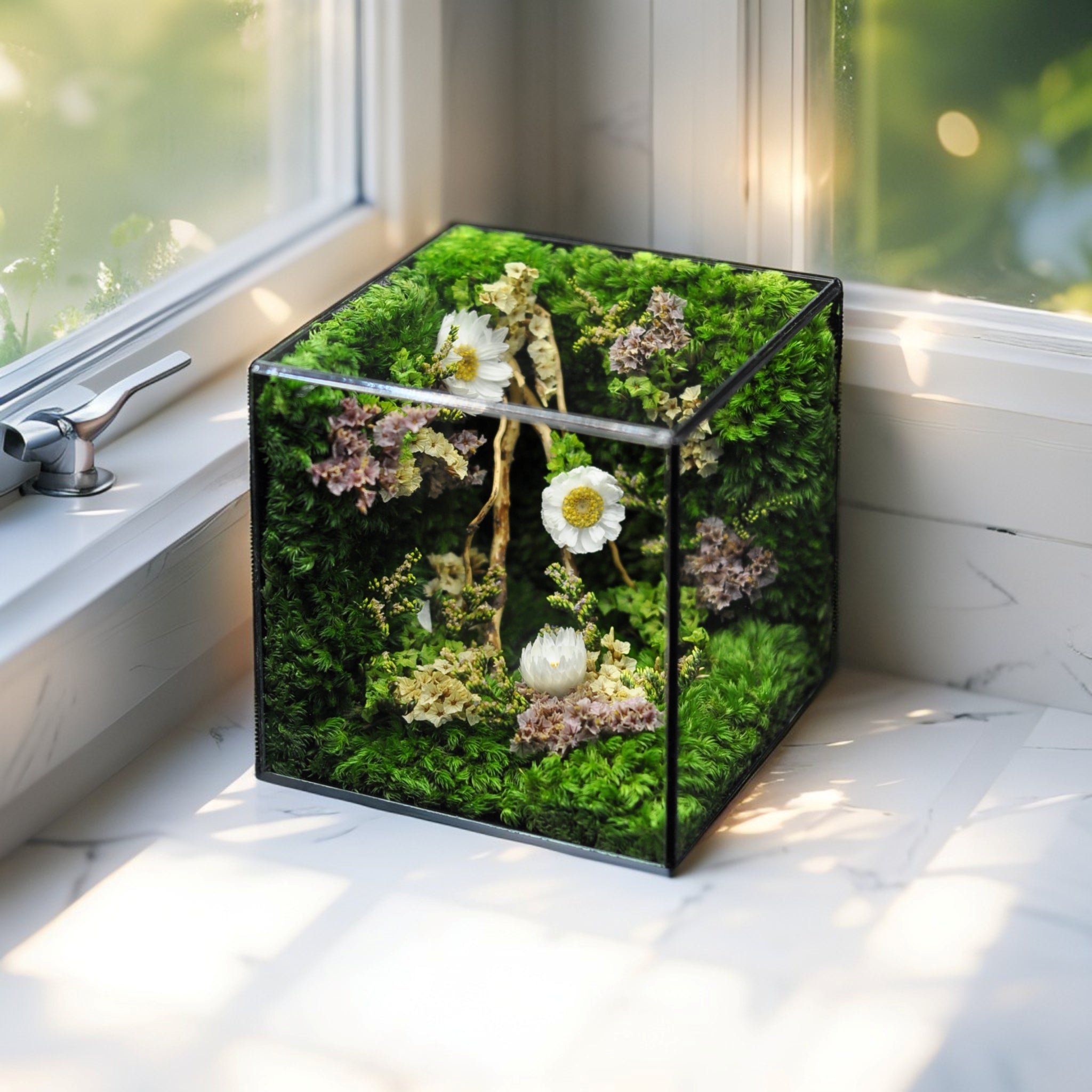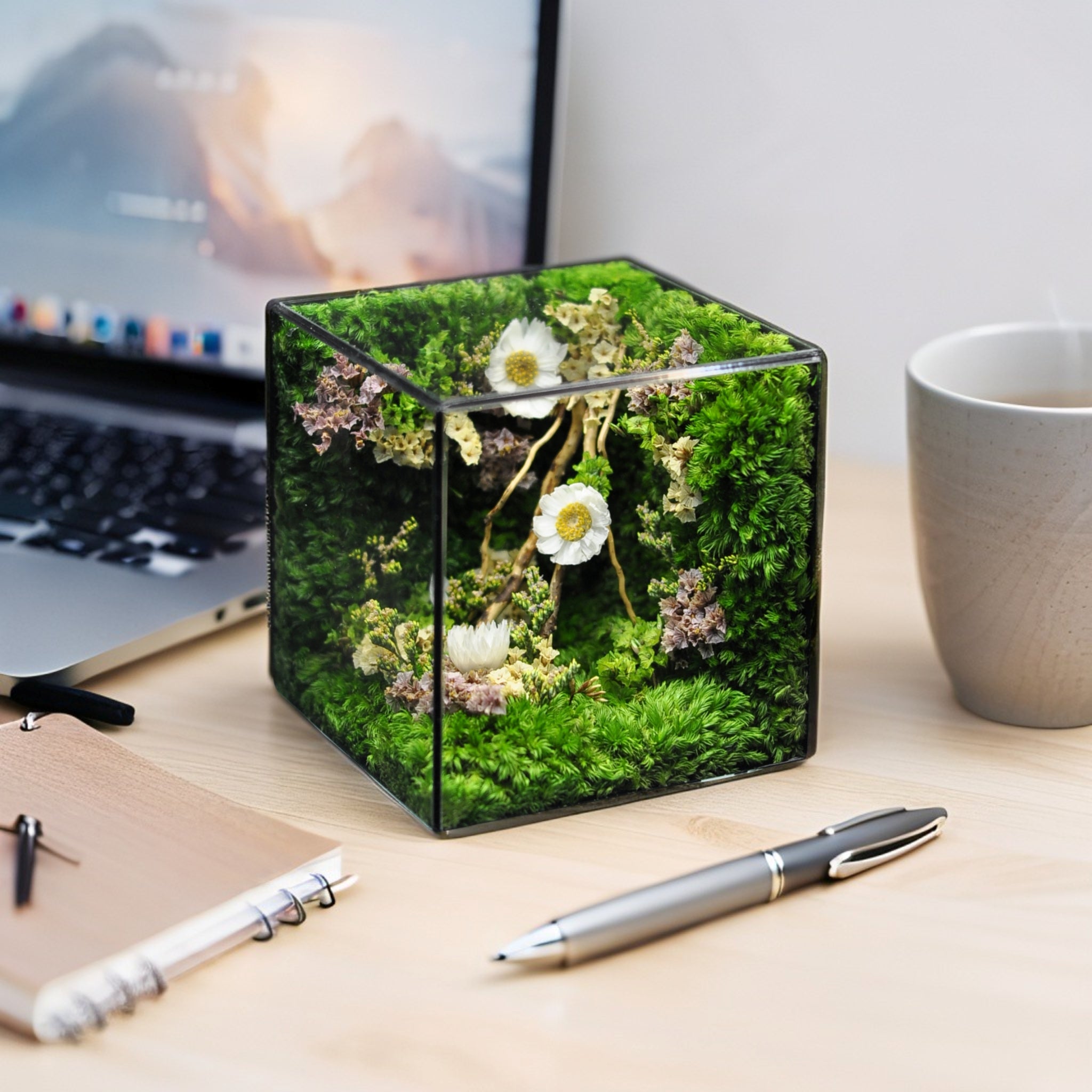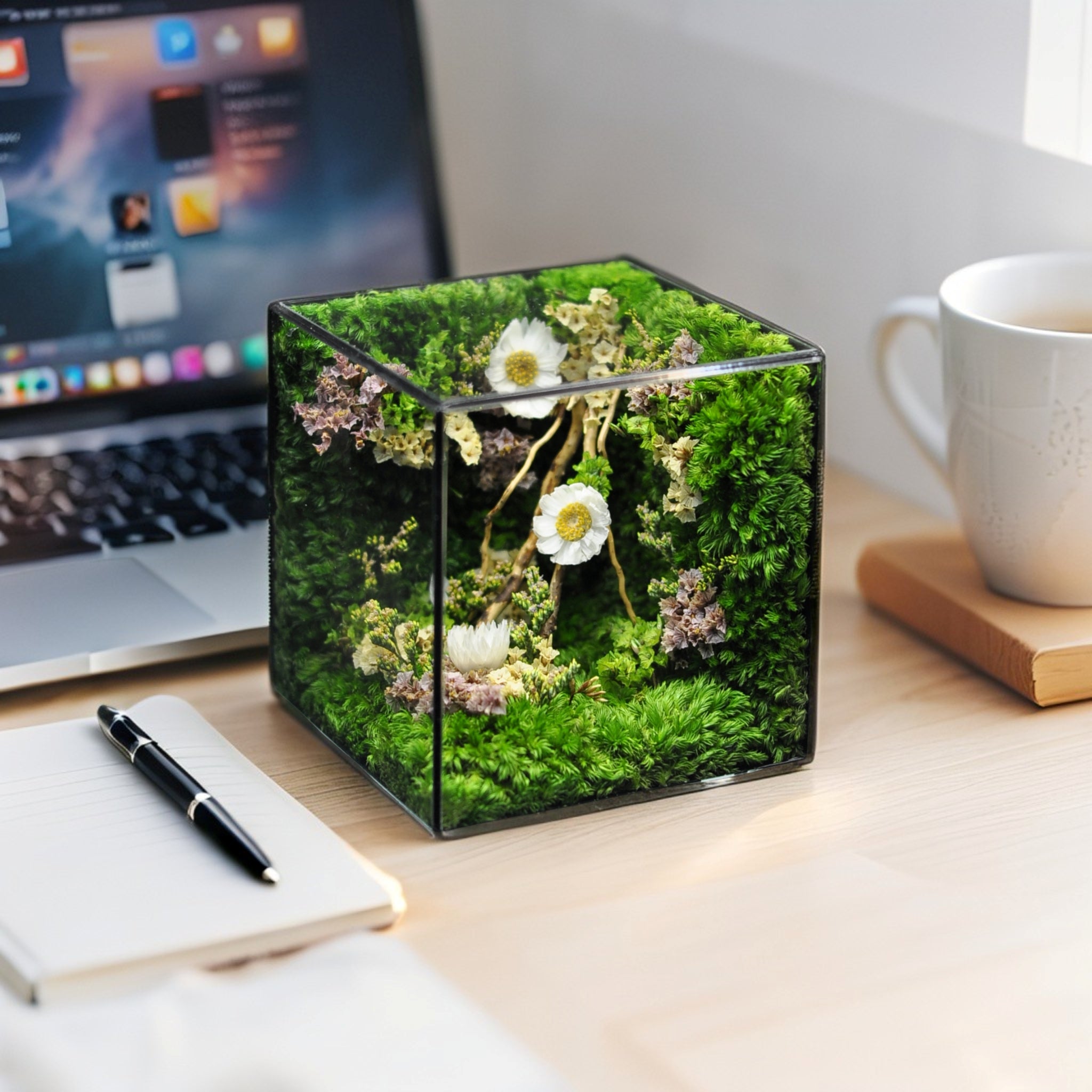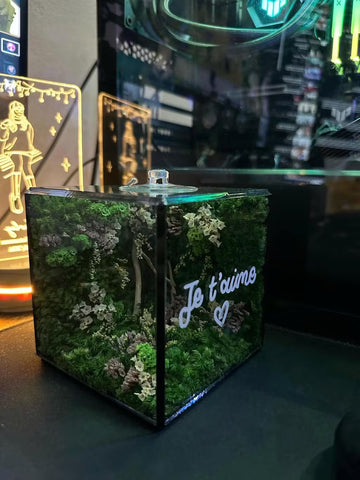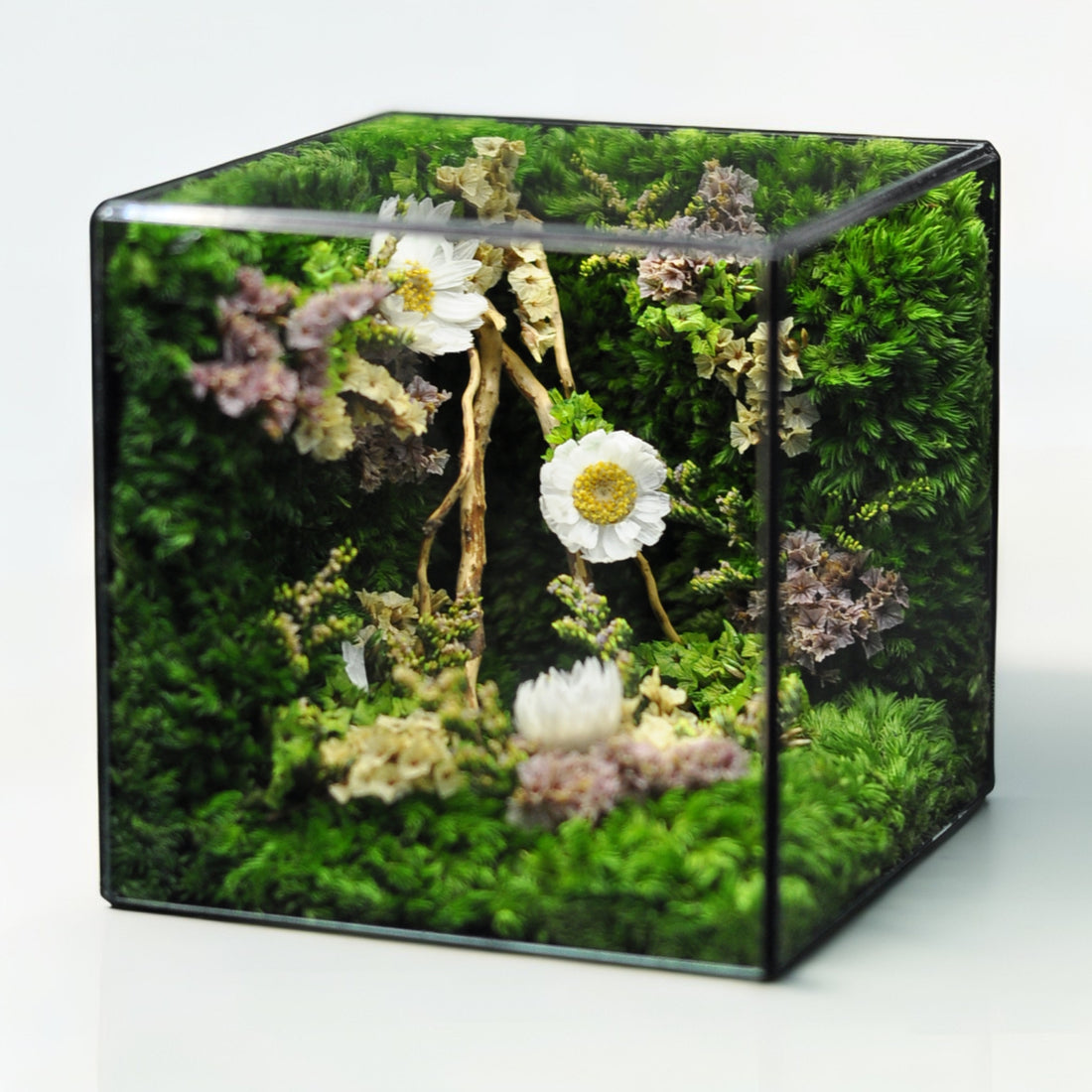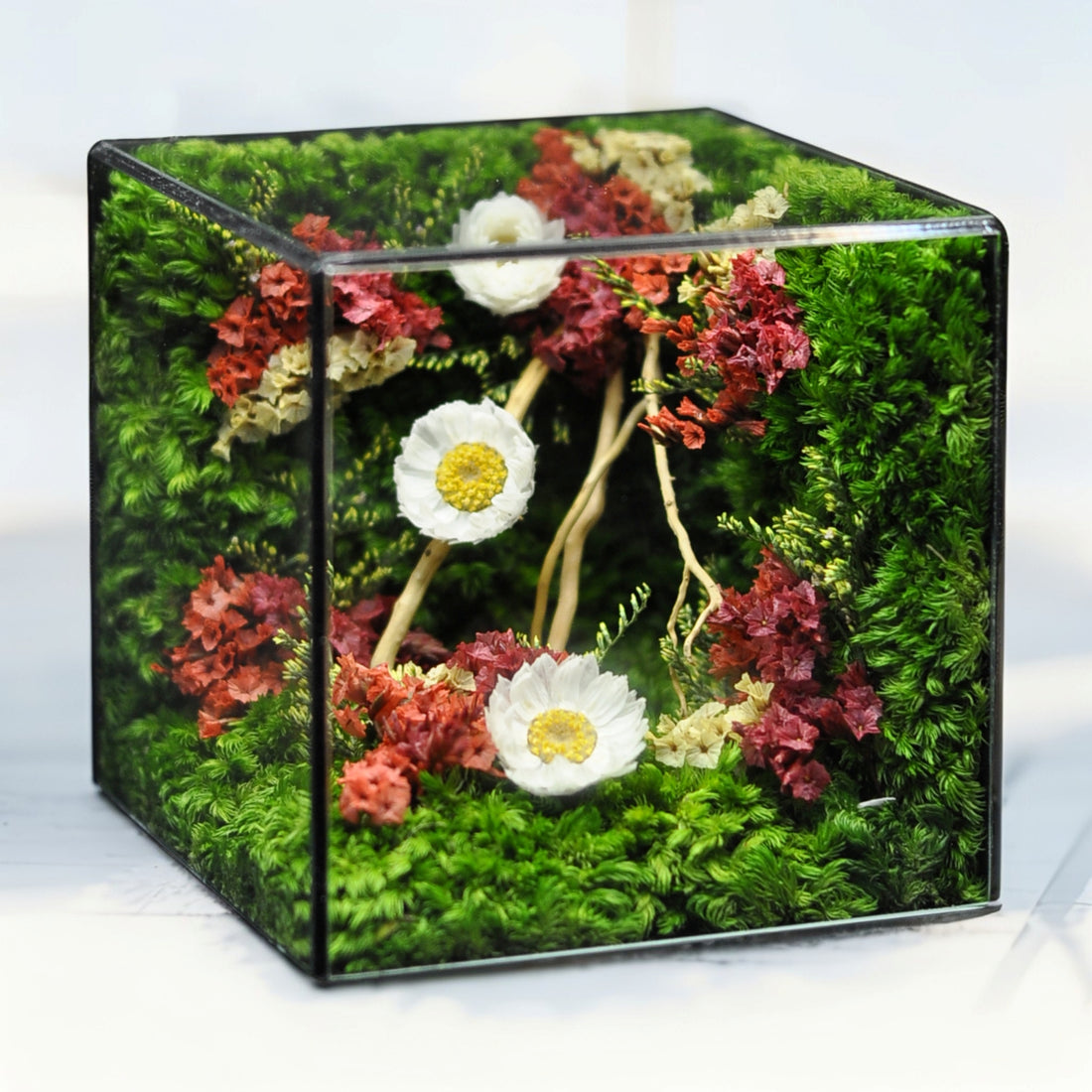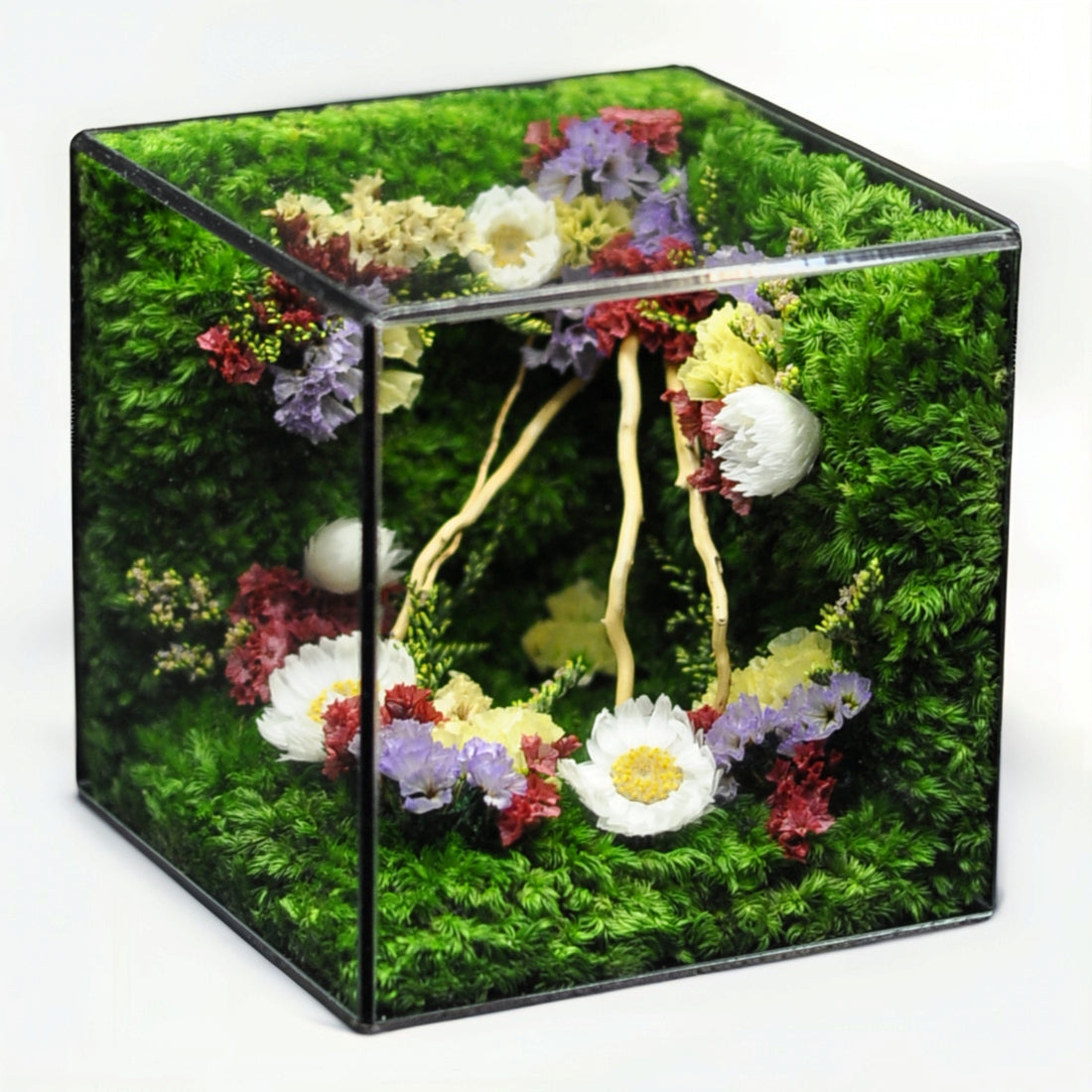Table of Contents
Error: [31m The Parser function of type "button" is not defined. Define your custom parser functions as: [34mhttps://github.com/pavittarx/editorjs-html#extend-for-custom-blocks [0mKey Takeaways
Moss terrariums offer a captivating, low-maintenance way to bring greenery indoors without the DIY hassle of starting from scratch. Pre-made moss terrarium kits streamline the process—but comparing contents, prices, and suppliers is key to finding the best fit. Below are the essential takeaways to help you shop smart, set up your kit correctly, and keep your miniature ecosystem thriving.
- Compare kit contents like a pro: Always verify which moss varieties, substrate layers, drainage materials, and tools are included to avoid surprise purchases and ensure a complete setup.
- Balance price and quality for maximum value: Seek transparent pricing that reflects premium components (e.g., activated charcoal, high-density cushion moss) and avoid overpaying for kits with minimal extras.
- Choose moss varieties tailored to your space: Match cushion moss for dense growth, sheet moss for texture, or mood moss for low-light resilience to your home’s light and humidity levels.
- Layer correctly for healthy growth: Build from drainage pebbles to activated charcoal, then terrarium substrate, and finish with moss placement to maintain moisture balance and prevent root rot.
- Master a simple care routine: Mist sparingly to maintain humidity, monitor moisture levels to avoid overwatering, and position your terrarium in bright, indirect light to keep moss vibrant.
- Personalize with creative design touches: Enhance your setup with decorative stones, miniature figurines, or driftwood to showcase your style and complement the moss’s natural texture.
- Prevent and troubleshoot common issues: Tackle yellowing by adjusting watering frequency, curb algae with proper ventilation, and revive dry patches through targeted misting and relocating to higher humidity spots.
- Buy from trusted vendors online: Choose sellers with clear return policies, detailed product descriptions, and positive customer reviews—popular options include Etsy shops, specialized terrarium stores, and select Amazon retailers.
Armed with these insights, you’re ready to select the perfect moss terrarium kit and create a thriving miniature landscape. Next, we’ll dive into a step-by-step setup walkthrough, ongoing care tips, design inspiration, and troubleshooting strategies to ensure your mossarium flourishes.
Introduction
Are you ready to transform your living space into a lush, mini-ecosystem without the daunting DIY effort? Moss terrariums are not just a charming addition to your decor; they're a hassle-free way to enjoy the tranquility of nature indoors. With pre-made moss terrarium kits, you can skip the usual groundwork and dive straight into the joy of greenery.
Selecting the right moss terrarium kit is crucial to ensuring your new verdant friend thrives. By comparing contents, prices, and suppliers, you’ll make an informed choice that suits your needs and budget. This guide will walk you through everything from picking the perfect kit to implementing an effective care routine, helping you create a stunning, low-maintenance arrangement that resonates with your personal style. Let’s explore how to shop smart and nurture your very own mossarium!
Choosing the Right Moss Terrarium Kit: Compare Contents Like a Pro
Most moss terrarium content covers DIY assembly and care, but according to Ahrefs, 72% of searches for “moss terrarium kit” focus on ready-to-assemble options. Whether you’re a DIY beginner, gift shopper, or home décor lover, this guide breaks down exactly what to look for in a moss terrarium kit—contents, price, and vendor quality—so you can shop like a pro.
Moss Varieties Included (Types of Moss and Their Characteristics)
- Cushion Moss (Leucobryum glaucum)
- Appearance: dense, pillow-like clumps of pale green
- Growth Habit: slow, upright mounds
- Care: consistent moisture, bright indirect light (3–6 ft from an east/west window)
- Best for: textured focal points
- Sheet Moss (Hypnum cupressiforme)
- Appearance: flat mats, deep emerald green
- Growth Habit: fast-spreading ground cover
- Care: tolerates slight drying between misting
- Best for: lush, uniform carpet
- Mood Moss (Dicranum scoparium)
- Appearance: spiky, upright tufts of vibrant green
- Growth Habit: moderate; moderate low-light tolerance
- Care: adaptable to humidity fluctuations
- Best for: shaded corners and vertical interest
Combining cushion and sheet moss balances texture and coverage, while mood moss accents low-light spots.
Essential Layers: Drainage Pebbles, Activated Charcoal, and Terrarium Substrate
- Drainage Pebbles
- Role: create an air gap at the base to prevent waterlogging
- Tip: use 1–2 cm (0.5–1 in) of river stones or LECA
- Activated Charcoal
- Role: helps adsorb impurities and prevent odor buildup
- Tip: rinse thoroughly before layering
- Terrarium Substrate
- Role: nutrient medium for moisture retention and root support
- Mix Ratio: 2 parts potting mix, 1 part orchid bark, 1 part sphagnum peat
- Learn more in our terrarium substrate guide
Tools and Extras in a Moss Terrarium Kit
Basic Tools
- Tweezers or long-nose tongs for precise placement
- Small spray bottle for misting
- Nitrile gloves to avoid transferring oils
Decorative Extras
- Polished stones or river pebbles
- Mini driftwood (soaked and leached of tannins)
- Optional miniature figurines (fairies, animals, architectural accents)
Balancing Price and Quality: Finding the Best Moss Terrarium Kits
Ever wondered if spending $60 on a kit is worth it? Let’s compare contents vs. cost across top vendors—including shipping and add-ons—for full transparency.
Evaluating Kit Content Versus Price (Moss Terrarium Kit Price Comparison)
- Green Shelf Starter Kit (The Green Shelf)
- Price: $25 + $5 shipping (total $30)
- Includes: 8 oz glass container, cushion moss, drainage pebbles, charcoal, substrate mix, tweezers, spray bottle
- Moss & Co Premium Kit (Moss & Co)
- Price: $65 (free shipping)
- Includes: designer glass globe, three moss varieties, decorative driftwood, stones, full toolset, illustrated guide
- Amazon Best-Seller Kit (Link)
- Price: $40 + $8 shipping (total $48)
- Includes: 6 oz glass vessel, sheet moss, substrate pods, pebbles, mini tools
Pro Tip: Check for hidden fees like expedited shipping and specialty décor that can raise the final cost.
Best Moss Terrarium Kit for Beginners
Here are three all-in-one kits with clear instructions and hassle-free setup, ideal for first-timers:
- Green Shelf Beginner Kit ($30, The Green Shelf)
- Moss Masters DIY Kit ($45, Amazon)
- MossyCornersCo Starter Set ($50, Etsy Shop: MossyCornersCo)
These kits come pre-measured and include step-by-step guides—assembly in 15–20 minutes.
Where to Buy Moss Terrarium Kits Online
Looking for the best place to buy? Here’s where to shop:
- Amazon
- Pros: fast shipping, wide price range, extensive reviews
- Cons: vendor reliability varies
- Etsy Shops
- Pros: handmade kits, eco-friendly sourcing, customization
- Cons: longer delivery, quality varies by seller
- Notable Sellers: MossyCornersCo — 4.9/5 stars, custom décor options GreenThumbTerrariums — 4.8/5 stars, sustainable packaging
- Specialized Terrarium Stores
- The Green Shelf — curated selection, expert support, premium packaging
- Moss & Co — designer kits, sustainable sourcing
- Pros: high-quality materials, return policies
- Cons: higher price point
Step-by-Step Moss Terrarium Kit Setup Process
Before You Begin
- Tools & Materials Checklist: container, pebbles, charcoal, substrate, moss, tweezers, spray bottle, gloves
- Assembly Time: 15–20 minutes
- Common Mistakes: over-compacting substrate, skipping charcoal rinse
- Storage Tip: keep leftover moss in a sealed bag in the fridge; store unused substrate in a cool, dry place
“I built my first kit in under 20 minutes and saw full moss coverage in just four weeks!” — Jane, Seattle
Preparing Your Workspace and Materials
- Clear a flat surface and lay down a protective mat.
- Sanitize container and tools with isopropyl alcohol.
- Arrange components within reach for a smooth build.
Layering for a Healthy Mini Ecosystem
- Spread 1–2 cm (0.5–1 in) of pebbles for drainage.
- Rinse and layer 0.5–1 cm (0.25–0.5 in) of charcoal.
- Add 2–3 cm (1–1.25 in) of substrate and lightly compact.
- Place moss varieties per your design plan; press gently for contact.
Pro Tip: Avoid packing substrate too firmly—roots need air pockets to thrive.
Final Assembly and Initial Hydration
- Lightly mist until moss glistens; avoid puddles.
- Check condensation after 24 hours; adjust misting as needed.
Ongoing Care and Maintenance for a Thriving Moss Terrarium
Watering Routine: How Often to Mist and Monitor Moisture Levels
- Misting Frequency: 2–3 times per week (adjust for indoor humidity)
- Under-hydration: curling or fading edges
- Overwatering: constant condensation, yellowing moss
- Tool: use a hygrometer to maintain 60–80% relative humidity (Source: Royal Horticultural Society)
Light Requirements: Direct Sunlight vs. Bright Indirect Light
- Avoid direct sun—moss can scorch and overheat.
- Ideal: bright, indirect light (3–6 ft from an east/west window) or fluorescent grow lights.
Monitoring Humidity and Temperature
- Maintain 65–75°F (18–24 °C) for optimal growth.
- Seasonal Tip: in winter, avoid placing near radiators; in summer, keep away from AC vents.
Creative Design Inspiration and Personalization
Natural Enhancements: Decorative Stones and Driftwood
- Mood Board: pair emerald sheet moss with white quartz stones for a modern minimalist look.
- Soaked driftwood adds sculptural contrast—soak for 24 hours to leach tannins.
Miniature Figurines and Layout Techniques
- Use the rule of thirds for focal placement.
- Group elements in odd-numbered clusters for balance.
- See our Terrarium Design Tips for more styling ideas.
Rapid Rescue Tips: Preventing and Troubleshooting Common Moss Terrarium Issues
Yellowing or Browning Moss Remedies
- Overwatering: reduce misting, open lid for airflow.
- Underwatering: increase misting, or add a thin substrate top-up.
- Action: trim damaged patches to encourage new growth.
Algae Growth Control Through Ventilation
- Open lid daily for 10–15 minutes to improve airflow.
- Wipe algae from glass with a soft cloth.
- Pre-rinse decorative elements to prevent spore introduction.
Reviving Dry or Patchy Areas
- Mist heavily and cover with a clear dome for 24 hours.
- Transplant healthy moss fragments into bare spots.
Expert Tips, Customer Reviews & Trusted Vendors
Expert Insights from Moss Enthusiasts
“Consistency is key—moss thrives when moisture and light are stable.” — Alex Green, Founder of MossMasters (https://www.mossmasters.com)
“Sustainably sourced moss not only looks better but supports ecosystems.” — Dr. Linh Tran, Bryologist, University of British Columbia
Selecting Vendors with Clear Return Policies and Detailed Descriptions
Checklist for vetting sellers:
- 30-day return window
- High-resolution product photos
- Transparent shipping fees and timelines
- Eco-friendly packaging claims
Community Feedback and Ratings (Etsy, Amazon, Specialized Stores)
- Etsy: average 4.9/5 stars; praised for customization and service
- Amazon: average 4.3/5 stars; fast delivery but variable kit completeness
- Specialty Stores: average 4.7/5 stars; higher cost offset by expert support
Armed with this guide, you’re ready to choose, build, and care for the best moss terrarium kit—confidently and creatively.
Conclusion
Choosing the right moss terrarium kit involves understanding the diverse moss varieties, essential layers, and tools discussed, allowing enthusiasts at any skill level to create thriving, beautiful ecosystems. The comparative analysis of kit contents and pricing helps you make informed decisions, ensuring you get value for your investment. Moreover, the ongoing care tips shared empower you to maintain your terrarium’s health, making the experience enjoyable and rewarding.
Ultimately, as you embark on your moss terrarium journey, consider personalizing your creation with unique decorative elements and following best practices for setup and maintenance. With proper attention and creativity, you can cultivate a stunning green space that reflects your personal style, enhances your home, and contributes positively to the environment. Are you ready to bring the vibrant beauty of a moss terrarium into your life?
Frequently Asked Questions (FAQ)
Q: What is the best moss for a terrarium?
A: It depends on your design goals: cushion moss (Leucobryum glaucum) creates dense, pillow-like focal points; sheet moss (Hypnum cupressiforme) forms a fast-spreading green carpet; mood moss (Dicranum scoparium) adds spiky, upright accents ideal for low-light spots.
Q: How often should you water a moss terrarium?
A: Mist your terrarium 2–3 times per week, adjusting for indoor humidity to maintain around 60–80% relative humidity.
Q: Does a moss terrarium need direct sunlight?
A: No. Moss thrives in bright, indirect light (3–6 ft from an east/west window) or under fluorescent grow lights; direct sun can scorch and overheat it.
Q: What layers are essential in a moss terrarium kit?
A: A proper kit includes 1–2 cm of drainage pebbles, 0.5–1 cm of rinsed activated charcoal, and 2–3 cm of substrate (2 parts potting mix, 1 part orchid bark, 1 part sphagnum peat).
Q: What basic tools come in a moss terrarium kit?
A: Essential tools include tweezers or long-nose tongs for precise placement, a small spray bottle for misting, and nitrile gloves to avoid transferring oils.
Q: How long does it take to assemble a moss terrarium kit?
A: Most all-in-one kits are designed for a quick 15–20 minute setup, featuring pre-measured components and step-by-step guides.
Q: How do I troubleshoot yellowing or browning moss?
A: Yellowing usually means overwatering—reduce misting and open the lid for airflow; browning suggests underwatering—increase misting or add a thin substrate top-up. Trim away damaged patches to encourage fresh growth.
Q: How can I prevent algae growth in my moss terrarium?
A: Improve ventilation by opening the lid daily for 10–15 minutes, wipe algae from the glass with a soft cloth, and pre-rinse decorative elements to avoid introducing spores.





